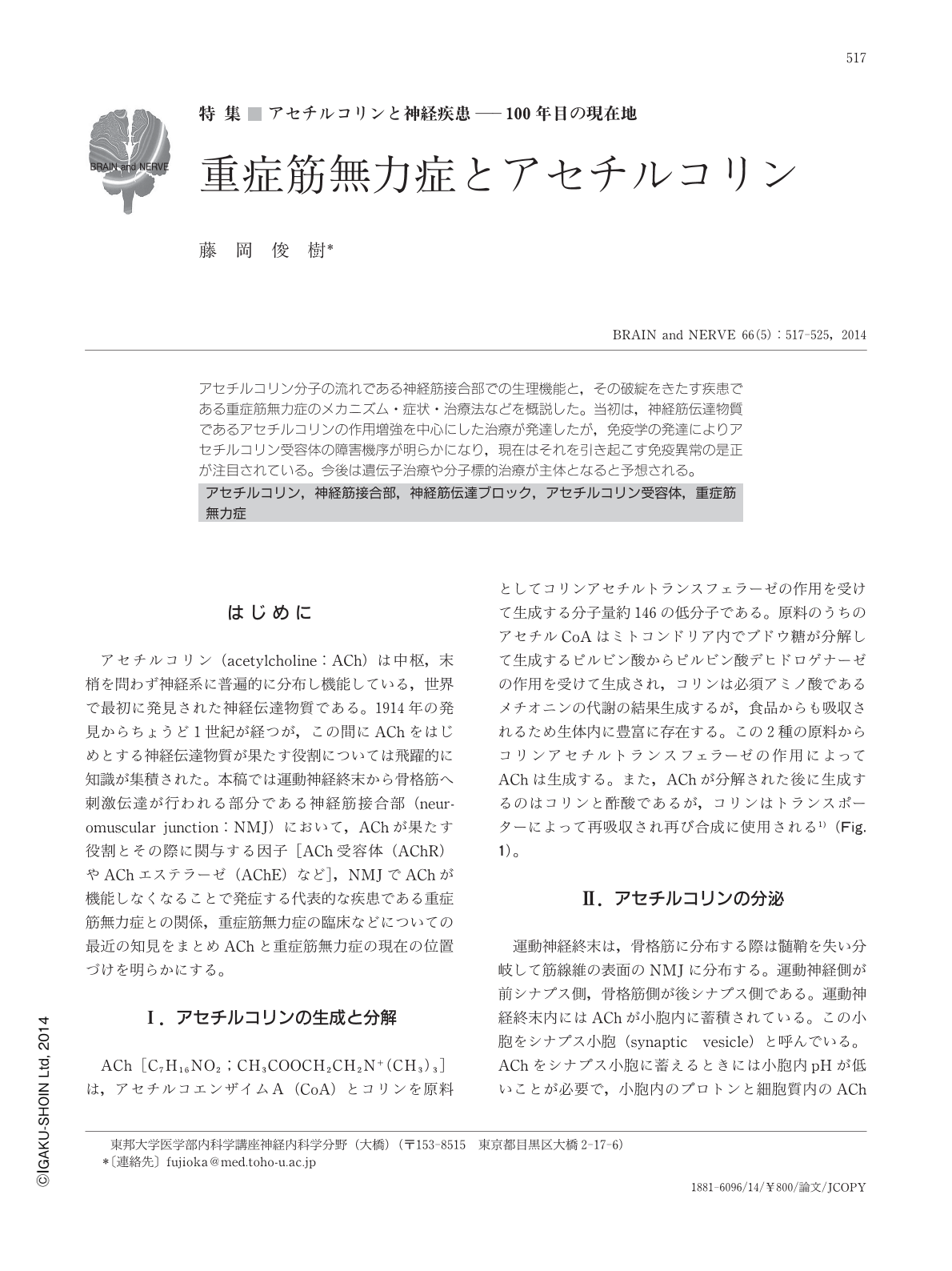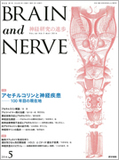Japanese
English
- 有料閲覧
- Abstract 文献概要
- 1ページ目 Look Inside
- 参考文献 Reference
アセチルコリン分子の流れである神経筋接合部での生理機能と,その破綻をきたす疾患である重症筋無力症のメカニズム・症状・治療法などを概説した。当初は,神経筋伝達物質であるアセチルコリンの作用増強を中心にした治療が発達したが,免疫学の発達によりアセチルコリン受容体の障害機序が明らかになり,現在はそれを引き起こす免疫異常の是正が注目されている。今後は遺伝子治療や分子標的治療が主体となると予想される。
Abstract
A century has passed since the discovery of the first neurotransmitter, acetylcholine, in 1914. Extensive research on acetylcholine and its function has provided us with important options to treat the formerly intractable neuromuscular disease myasthenia gravis (MG). In the first days of treatment for MG, acetylcholine esterase inhibitors are administered, which is only a symptomatic therapy. After overwhelming developments in immunology, the immunological mechanisms of MG at the molecular or genetic level were recognized. Destruction of the acetylcholine receptors through autoimmune attacks plays a pivotal role in the evolution of MG. Thus, a mainstay of the newly developing treatments for MG are effective immunosuppression or immunomodulation. However, these therapeutic approaches are still "symptomatic", and target immunological rather than specific myasthenic symptoms. Immunomodulation may result in fatal immunodeficiency. From this point of view, although they are somewhat removed from first-line MG treatment (cholinesterase inhibitors), future drug development should focus on the cancellation of autoimmunity in MG patients.

Copyright © 2014, Igaku-Shoin Ltd. All rights reserved.


